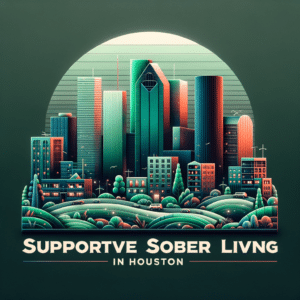Updated on August 20th, 2020
Whether you’ve just completed rehab, you’ve been out of treatment for a few months, or you recently relapsed and need some support, a sober living home can provide the structure, accountability, and support you need to get back on track.
With countless sober living homes located all across the country, choosing a sober living home for yourself or a loved one isn’t always easy. Despite the many options available, there are several things you can do to ensure that you find the perfect fit for your recovery needs, your personal preferences, and your budget.
Table of contents
- How Do You Choose a Sober Living Home?
- 1. Consider the location of the transitional living home.
- 2. Do your homework.
- 3. Visit the sober living home.
- 4. Review the rules for residents.
- 5. Learn everything you can about the staff.
- 6. Familiarize yourself with the financial requirements.
- 7. Choose a home that allows for a flexible length of stay.
- 8. Watch out for red flags.
- Find a Sober Living Home Today
How Do You Choose a Sober Living Home?
If you’re just starting your sobriety journey, you may be wondering how to choose a sober living house. With so many options and no prior experience living at a transitional living house, it can seem almost impossible to choose.
At Eudaimonia Recovery Homes, we want to make sure you find a high-quality sober living home that addresses all of your recovery needs. On the same note, we also understand how difficult it can be to find the right living situation. To make your life easier, we created this step-by-step guide to help you navigate your way through the process.
1. Consider the location of the transitional living home.
The location of a sober living home is very important, as it will become the base for all your life activities—at least for a little while. First and foremost, your safety is key. You will want to consider the following location-related questions to ensure that you are safe and have easy access to all the things you need while you’re living at a sober living home.
- Is the sober living home located in a safe neighborhood that is conducive to your recovery?
- Is the sober living home close to your work or school?
- Are there recovery meetings near the home or within walking distance (if you don’t have a car)?
- Can you easily get to a grocery store via car, walking, or public transit?
- How easily can you get to a healthcare provider if you need to?
- If the sober living home does not have a washer and dryer, is there a laundromat nearby that you can access?
- What types of activities are nearby that will provide sober fun?
- Is the city or town projected to grow or is the population decreasing?
- How are the local economy and job market?
Asking these kinds of questions is especially important if you are considering relocating to a new city to live in a sober living home. Although relocating can pose certain challenges, it can also provide a brand new start in a different place, which can be refreshing and highly motivating for many people.
2. Do your homework.
When searching for a transitional living program, due diligence is very important. You will need to do your research to make sure that any sober living home you’re considering is going to provide the recovery support services you need, a safe and positive living environment, and keep you accountable to your recovery goals.
Although many sober living houses are not regulated or monitored by any state, local, or national agency, some are. A few outward signs of high-quality sober living homes include the following:
- Accreditation and/or licensing: Accreditation and/or licensing is an outward sign of a sober living home’s commitment to excellence and is a great indication that the management and programs are good. To find a transitional housing that maintains a high standard of care, look for those that are backed by well-known organizations like the National Alliance for Recovery Residences (NARR) and its affiliates, such as the Texas Recovery-Oriented Housing Network.1
- Strict no-tolerance policy for alcohol and drugs: A great sober living home will have a strict policy that does not tolerate any drug or alcohol use. This ensures that the living environment will remain safe and sober for all residents at all times. This greatly reduces stress and temptation in the early stages of recovery.
- Clearly-stated rules for residency: A sober living home should also clearly state its rules and regulations for residents. This is evidence the staff is committed to the safety, health, and well-being of all residents and it also ensures that you’ll be living in an environment that will keep you accountable to your behavior.
- Clean and structurally sound living spaces: If a sober living home is not clean or the facility is not structurally sound, you should be very wary about living there. A clean and well-kept transitional living home is an outward sign that the staff and residents respect one another and are committed to their responsibilities and ongoing success in sobriety.
- Recovery support services for sobriety maintenance: If you intend to stay sober for the long-haul, it would be best to find a sober living home that provides recovery support services, such as employment assistance, drug testing, certified peer recovery programs, volunteer placement, educational planning, and access to IOP for residents who need it.
The best way to determine whether a sober living home meets the above criteria is to check out the website, check local listings and client reviews/testimonials, talk to the staff, and ask as many questions as possible.
3. Visit the sober living home.
As you narrow down your options, it’s also a good idea to visit any sober living homes on your list if you can. Get in touch with the staff and schedule a day visit to check out the home for yourself. While you’re there, ask yourself questions like “Do I feel comfortable here?” “Would I want to live here for days, weeks, or months?”
Take note of the behaviors of the current residents as well. Do they seem happy and comfortable? Is the atmosphere one of positivity or negativity? If you can’t visit the home personally, look at photos online, and read reviews from previous residents to get a better idea of what the atmosphere and living accommodations are like.
You may also want to consider bringing a trusted sober friend, family member, or your sponsor with you for a second opinion. That way, if you have trouble making objective observations, you have another trusted individual to consult with.
4. Review the rules for residents.
Once you’ve visited the sober living home, you’ll want to talk to the management or admissions team to make sure you understand the rules, requirements, and expectations for residents. It is best to do this before you commit to residency, as it will be more difficult to back out once you travel to the location and prepare for enrollment.
As you review the rules and standards for residents of the sober living home, here are a few things you may want to look for:
- Does the sober living home provide one-on-one peer accountability or sober coaches?
- Do residents participate in any type of recovery programming and/or 12-step group meetings?
- Is random drug testing a part of the process?
- What is the policy on drugs and alcohol within the home, including prescription medications?
- What is the visitor policy?
- What kinds of social activities are planned for the residents, if any?
- What is the policy on romantic relationships?
These are all important things to consider when you are choosing a sober living home as they may have a lasting impact on your ability to maintain long-term sobriety.
5. Learn everything you can about the staff.
The staff management of a sober living home plays a big role in the success and happiness of its residents. Before you enroll in a transitional living program, you’ll want to find out who is on staff, what qualifications they have, and how they interact with residents.
Do they live on-site and provide peer guidance? Are they in recovery themselves? What is the staff to client ratio like? How do they keep residents accountable to their sobriety? A transitional living house that employs a strong but caring staff who will enforce the rules and provide consistent, on-site residential support is a good sign.
If there are no staff members on-site, you may want to ask the management how residents are held accountable and what kind of recovery support services are available. Although this type of sober living environment may work well for some individuals who already have months or years of experience living sober, a newly sober person will likely need more accountability and support to be successful.
6. Familiarize yourself with the financial requirements.
Of course, no matter how much you like a sober living home, you’ll also need to make sure you can afford to live there. Most transitional housing programs charge a monthly fee to cover room and board, but you’ll need to plan to pay for your own food, hygiene products, and transportation costs.
If you plan to enroll in an intensive outpatient program (IOP) or attend regular clinical counseling sessions, you may be able to use your health insurance benefits to cover some of the costs. It is wise to consult with admissions representatives at the sober living home and confirm that they accept your insurance before you enroll.
The admissions staff at a sober living home will be able to answer any other questions you have about sober living costs and they may even offer scholarships or financial assistance. Every sober living home provides different recovery support services and has varying financial requirements, so when in doubt, it is best to ask as many questions as possible.
If you have recently completed rehab at a residential addiction treatment center, your treatment team should also be available to provide recommendations and referrals for sober living homes based on your financial ability and needs.
7. Choose a home that allows for a flexible length of stay.
Some sober living homes have length of stay requirements for residents. For example, you may be required to live at the facility for at least six months. Other sober living homes may not have any requirements concerning the length of your stay.
Unfortunately, there’s no way of knowing how long you will need to stay at a sober living home, so it’s often best to choose one that allows for flexibility and allows you to stay as long as you need. It is often best to live at a sober living home until you and your sponsor are confident in your ability to live sober on your own without the additional structure of a sober living home.
8. Watch out for red flags.
There are several red flags you can watch out for if you’re new to recovery and searching for a sober living home. Here are some of the most common indications that a sober living home does not provide proper care for people in recovery:
- Rundown, dirty, or unsafe structure
- Does not adhere to regulatory inspections
- No admissions requirements
- Claims to be free
- No rules for residents
- No staff or unqualified staff
- Does not require drug testing for residents
A sober living home that demonstrates some or all the red flags listed above is likely not a good choice. The best sober living homes provide safe, sober, and high-quality living spaces.
Find a Sober Living Home Today
Choosing a sober living home doesn’t have to be difficult. At Eudaimonia Recovery Homes, we provide safe, clean, and supportive transitional living options for men and women in all stages of recovery. We operate several different sober living homes and apartments in Austin, Houston, and Colorado Springs, where residents can become an active part of a supportive recovery community and work to achieve their recovery goals.
If you’re searching for Houston, Colorado Springs, or Austin sober living for women or a men’s sober living home in the same locations, you’ve come to the right place. Call our admissions team today to learn more about our transitional living programs or to enroll yourself or a loved one in a program.
References:
VIDEO SCRIPT
Here are 6 tips to help you find the perfect sober living home for you.
Step 1: Consider the location.
Tip: A sober living home should be located in a safe neighborhood. You may also want to make sure that the home is close to your work (if you have a job), school, recovery meetings, grocery stores, and health care providers. This is especially important if you don’t have a car and rely on public transportation or walking to get around.
Step 2: Do your research.
Tip: Not all sober living homes are monitored by local, state, or national organizations. To find a transitional housing that maintains a high standard of care, look for those that are backed by well-known organizations like the National Alliance for Recovery Residences (NARR)
Step 3: Visit the sober living home.
Tip: Check out the sober living home for yourself, ask yourself if you feel comfortable there, and take note of the behaviors of current residents as well. A positive atmosphere and a clean living environment can do wonders for your recovery.
Step 4: Review the rules for residents.
Tip: Many sober living homes have structured recovery programming, require residents to participate in drug testing, and have curfew requirements. Make sure you understand the rules, requirements, and expectations for residents before you enroll.
Step 5: Learn everything you can about the staff.
Tip: A high-quality sober home should employ a strong but caring staff who will enforce the rules and provide consistent, on-site residential support. You may also want to find out if any staff members live on-site, how they keep clients accountable, and what the staff to client ratio looks like.
Step 6: Find out how much it costs.
Tip: Most transitional housing programs charge a monthly fee to cover room and board, but you’ll need to plan to pay for your own food, hygiene products, and transportation costs. You can also talk to admissions staff to find out if they offer scholarships or financial assistance.
Step 7: Enroll and make your move!
Tip: Once you’ve decided on a sober living home, don’t wait to enroll. Get started with your sober living journey right away!




